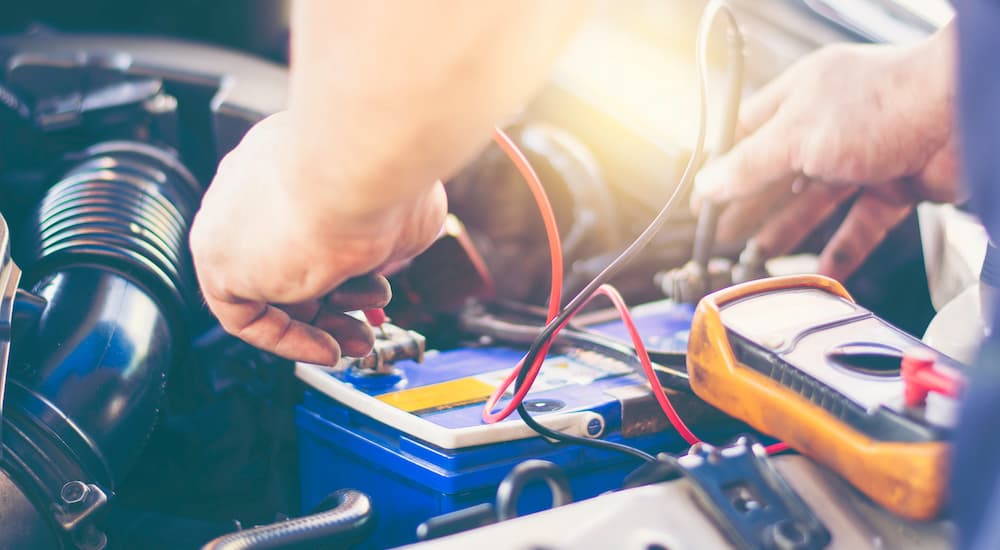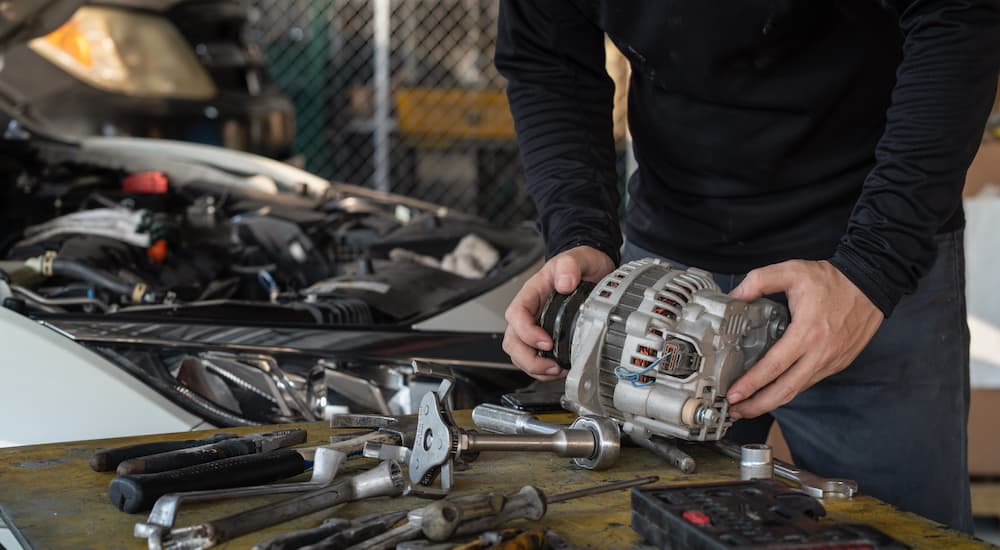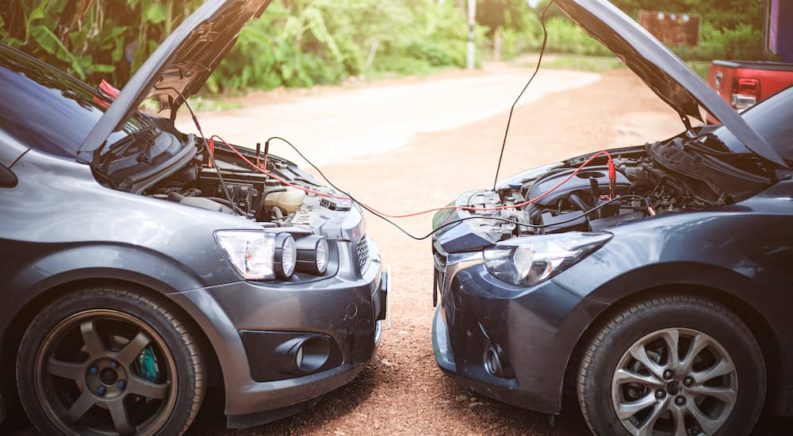One of the most frustrating (and most common) automotive failures is to get behind the wheel and have the engine fail to start. The vast majority of the time, this failure can be traced back to an aging battery and can be quickly remedied with a jump start and a drive to the nearest auto parts store. However, sometimes the problem can be a bit more complicated. From malfunctioning starters and alternators to unexplained parasitic draw, there are some occasions where a new battery just won’t solve the problem. Fortunately, these situations are not usually difficult to diagnose, and a little knowledge of how your car’s electrical systems work can go a long way toward keeping you from being stranded on the road.
How Does an Engine Start?
Let’s start with the basics. The vast majority of internal combustion engines need some outside force to get them started (there are a few tricks to get around this, but they are very rare). The reason why an engine needs an outside force to start is because of its natural cycle. A combustion engine needs to pull in air and fuel, compress the mixture, and then ignite it to generate power. A stationary engine cannot complete the first two steps in the four-stroke cycle. The outside force will turn the crankshaft and move the pistons, pulling in air and fuel and compressing the mixture, allowing the engine to start running.
In the early days of automobiles, this outside force came from the muscles of the driver as they had to physically crank the engine to get it started (this is still the case with most small engines for lawn mowers, chainsaws, weed whackers, etc…). Today, the outside force almost always comes from a small electric motor attached to the engine, known as the starter. The starter motor is powered by your car’s 12V battery, which gives it enough power to crank the engine a few times and get it running. Once the engine is running, the starter motor is out of the picture.
While an electric starter is by far the most convenient way to start a car engine, it is not the only way. Mazda’s automatic start-stop system, for example, carefully controls the piston position, ensuring that the engine always stops with some cylinders containing a compressed air and fuel mixture ready for ignition. Add a spark, and the engine will start running without any need for a starter motor. On the other end of the spectrum of sophistication, a manual car with a dead battery or bad starter motor can be “push started.” Simply get a few friends to push your car until it starts rolling, then hit the ignition and drop the clutch. Done properly, the forward momentum of the car will crank the engine and get it running.
What You Need to Know About Car Batteries
A car will generally fail to start because the starter motor isn’t getting enough electricity from the battery. Electrical motors tend to be extremely reliable (part of the reason why EVs are considered to be low maintenance), but lead-acid batteries are an old piece of technology and the real “weak link” in the system. In fact, the rechargeable lead-acid battery was invented all the way back in 1860! The basic design hasn’t changed all that much since then, and when your car fails to start, the odds are that something is wrong with the battery.
A car battery has two main failure modes, with the first simply being age. A lead-acid battery relies on a chemical reaction to store energy, and the reaction naturally becomes weaker over time until the battery can no longer hold enough charge to power the starter motor. It is generally a good idea to start keeping a close eye on your battery after around four years of use. Fortunately, an aging battery usually gives signs that it is on the way out, and if you pay attention, you may notice that your car is starting to have trouble starting before you find yourself stranded.
The second failure mode is wear. Car batteries live in a very hostile environment that is subject to extreme temperature swings as well as heavy vibration, both of which can damage the interior cells of the battery, reducing its effectiveness. While it may seem trivial, the battery posts can also corrode over time, and that corrosion can prevent a solid electrical connection. If you see build-up on the battery posts, just take some sandpaper and clean them off. All of this wear will generally be a relatively gradual process, and you may notice it over time, just like with a weakening of the chemical reaction.

Diagnosing a Failure to Start
If your car fails to start, there are a few simple signs that can tell you what has gone wrong. If you can hear the engine turning over slowly, then it is almost certainly a dying battery that no longer has the juice to get the starter working fully. The easiest way to confirm this is usually by jump starting the car–if it starts up after the jump, then it was the battery. Another way is to turn on the high beams and see if the extra load on the battery slows down the starter even more. Of course, if you have a multimeter in the car, you can simply check the battery directly. Anything significantly less than 12.6V means the battery isn’t fully charged.
However, a dead battery doesn’t always mean the battery needs to be replaced. If it is four or more years old, then a new battery is probably in your future. But if it is a newer battery or simply fails out of the blue, there may be a deeper reason why your battery doesn’t have enough power. Car batteries discharge as they are used and are then recharged from the alternator when the car is running. If the car hasn’t been used for a long time, or if you have left the lights, radio, or other electrical systems running with the engine off, the battery may simply have been drained. Leave the car running and give the battery a chance to recharge, then try to start the car again. If it works, then the battery is probably fine–but you should definitely visit a mechanic or auto parts store and have them check your battery health to make sure.
A drained battery can also be a sign of larger electrical problems. If you consistently find that your battery is out of juice even though your mechanic gave it a clean bill of health, you may have a case of a parasitic draw or a malfunctioning alternator. Parasitic draw is mainly caused by electrical systems not turning off when they should, drawing current and draining the battery. It is easy enough to diagnose (you can do it yourself with a multimeter and some basic electrical knowledge) and generally not expensive to fix. A malfunctioning alternator can be a bigger problem and will usually be accompanied by other electrical issues, from flickering lights to the engine stalling. If the alternator isn’t generating power properly, then your battery will try to take up the slack and may not get a chance to recharge, eventually resulting in a car that won’t start.

Finally, the least common reason why your car won’t start is a bad starter motor. While electrical motors are very reliable, they do occasionally fail. This type of failure will sound different as the engine won’t even try to turn over, and you may only hear a light clicking noise. When this happens, try turning on the high beams, radio, and other electrical systems. If they all work normally, then your battery probably has juice, and it’s indeed the starter that’s bad. Jump starting also won’t help a car with a bad starter, since lack of electricity isn’t the problem. If your starter dies on you, it’s going to be time to call a tow truck and get your vehicle to a mechanic for a new starter.
Don’t Be Left Stranded
While a bad starter can leave you with few good options (unless you happen to be driving a manual and have some muscular passengers willing to give you a push), most of the reasons why your car won’t start are easily remedied and will usually give you warnings long before you find yourself stranded. Keeping a set of jumper cables, or better yet, a charged jump pack, in your car will get your car up and running nine times out of ten. Keeping your car maintained and listening for problems when they start to appear will likely prevent your car from ever failing to start on you in the first place.

